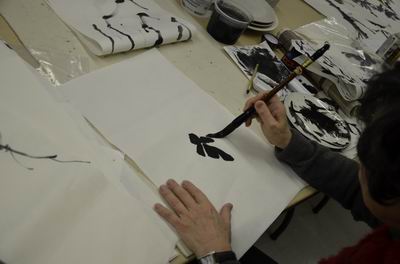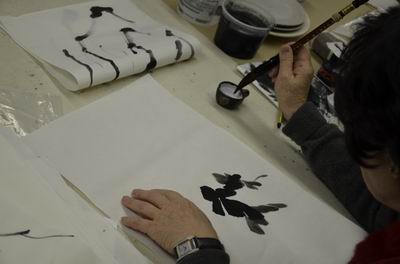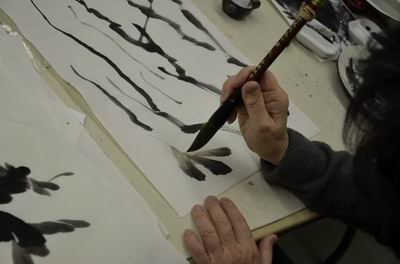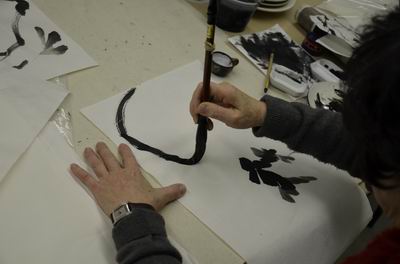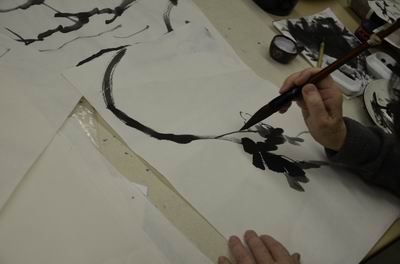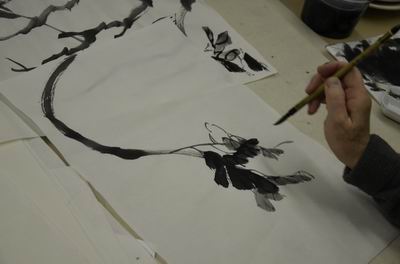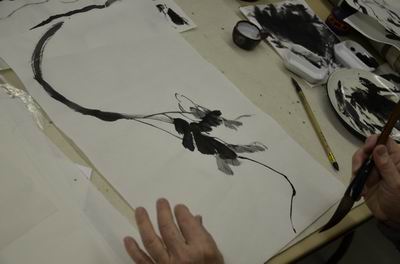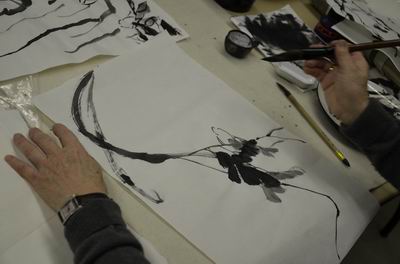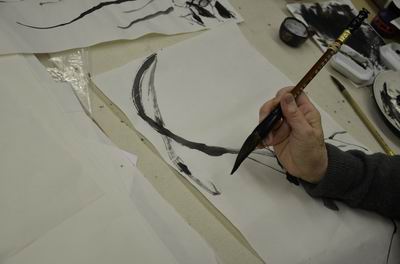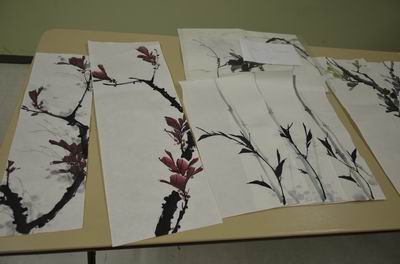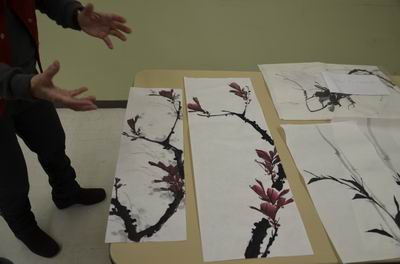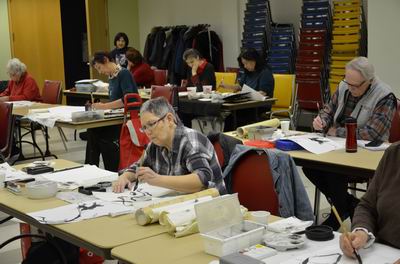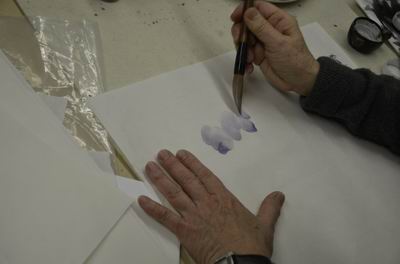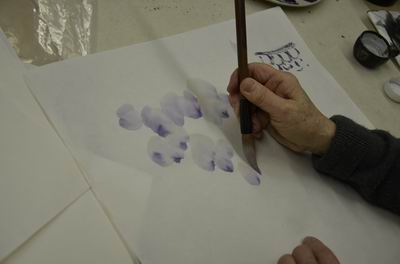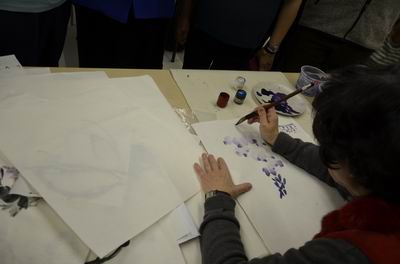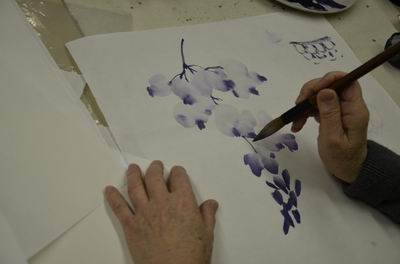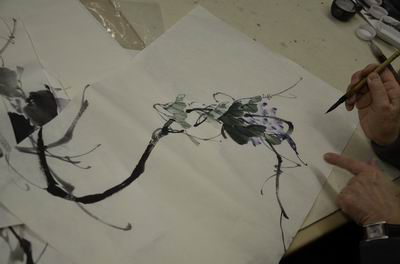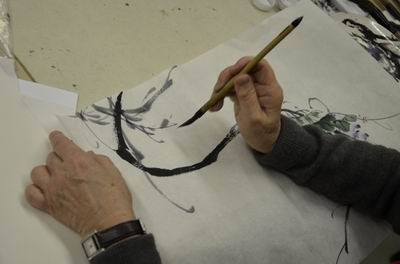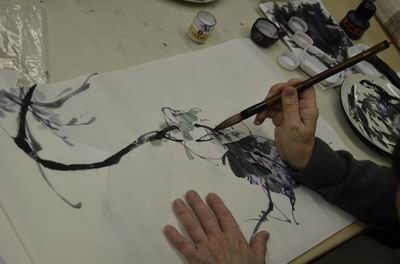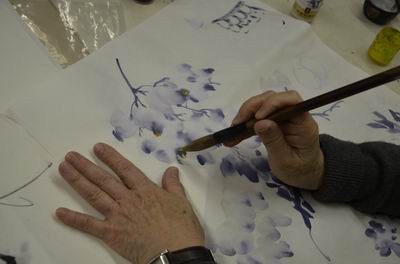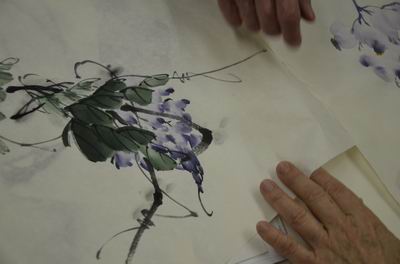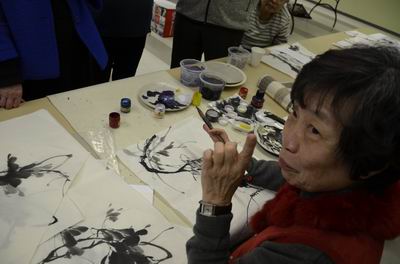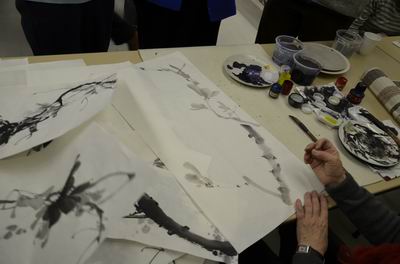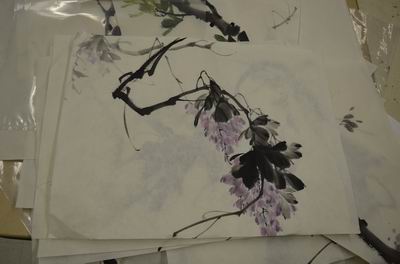Wisteria with Mimi Yeung - January 12th, 2019
Wisteria demands all your painting talent! Mimi Yeung suggested starting with the leaves. Use the flat side of the brush to create a leaf. Leaves should be created in a cluster where the leaves are shown from different angles.
Dipping the tip of your brush in clear water lets your brush create a faded image.
For example, leaves can be created with darker shading at the edges.
Create the main vine in the painting with one brush stroke. Use pressing and fast and slow movement to paint a lifelike vine.
Extend the vine to connect to the cluster of leaves.
Create thin stems with the tip of the brush.
More leaves were added by Mimi Yeung including lighter leaves that indicated they are farther from view. Veins were added too.
Mimi Yeung added another thin vine that added to the composition by running it to the bottom of the paper.
Another vine was added close to the original. In painting, this addition is known as the companion. This vine complements the first and adds to the composition of your painting.
Mimi Yeung made this brush stroke with a large brush. A large brush was used throughout the painting. Mimi Yeung prefers the large brush because it holds more ink and can be used to make the strong, bold lines you find in her work.
Artists at the workshop found many examples to help them get started on their own wisteria paintings.
Add light grey leaves, vines and flowers to the back of your painting to create a more interesting background.
The artists worked on their own wisteria with Mimi Yeung's help.
Flowers are created similar to the leaves. The shading of each petal gives the impression of roundness and depth to each petal and to the collection of petals in the flower.
Start at the top and work down. Make the petals varied, rather than in even rows.
Make the base of the flower with only a few dark petals.
Mimi Yeung added stems in the spaces of the flower.
Mimi Yeung demonstrated how to add the flower to the leaves and vines of a wisteria.
Background leaves and vines were added to this painting.
Complete your painting by filling in more details such as small, thin vines.
Add yellow to the center of the petals.
This detail illustrates how complex wisteria can become with vines, leaves and flowers intertwined.
Mimi Yeung reminded the artists to reflect on the points she had covered in the workshop.
The structure and presentation of wisteria is deceptively simple initially.
However, wisteria develops into a complex web of vines, leaves and flowers. Periodically look at your composition so that the wisteria stands out dramatically on a white page.
Through painting wisteria Mimi Yeung taught us a variety of brush strokes, how to load ink onto the brush and how to develop interesting compositions.
